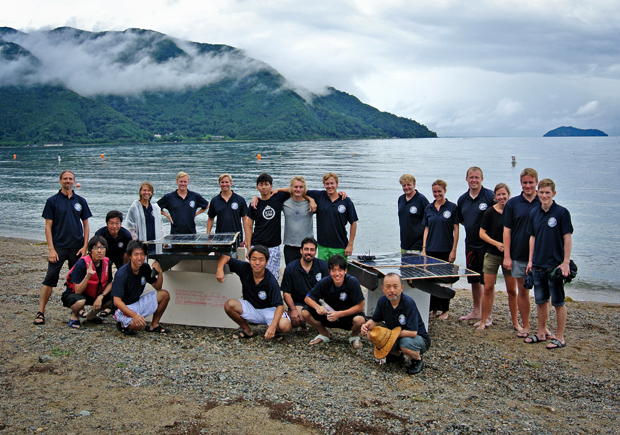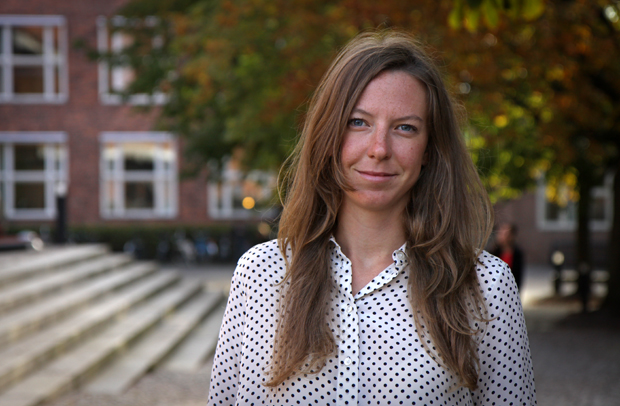Boats tap the rising sun
Coming from the land of the midnight sun, a team of KTH students traveled to the land of the rising sun to win a solar-powered boat race on Japan's largest lake.

Language and distance were no match for a team from KTH that collaborated with Japanese students to build a winning solar-powered, automomously-piloted boat.
For six months, 15 students in the Naval Architecture (TMRSM) master’s course worked with students from University of Tokyo to prepare two boats specifically for a student competition on Japan’s Lake Biwa.
Their toil paid off in late August when, despite clouds and pouring rain, the international team’s two boats placed first and second in the annual race.
The team built one boat from scratch, and then re-engineered an existing boat that the Japanese students had used in the previous year’s competition.
One of the KTH students, Ebba Lindh, says that the first hurdle to overcome was the language barrier between the KTH and Tokyo teams. “We started Googling about the competition in Japan,” she says. “But already there, we encountered language difficulties. All of the information was written in Japanese. Luckily one of us understood a little Japanese, and one of our teachers shared information with us.”

The project called for building a new solar-powered autonomous guided boat to race with an existing boat around a roughly 10 km course on Japan’s largest body of fresh water. “This, with a maximum of 2 square-meter solar panels,” Lindh says.
The group of students then needed answers to a number of questions: How windy is it in August at Lake Biwa? How hot? How high are the waves? And what speed did last year’s winners clock?
The group broke down the overall task into smaller problems, which were dealt with in breakout sessions led by project managers. Among areas of responsibility were the hull, propulsion, system, finances and communication with the Japanese students.
They developed a concept, analyzed and modeled propellers, examined solar panels, developed a functioning control system, investigated a variety of scholarships, and rang sponsors.
“The goal was to go to our Japanese colleagues in Tokyo, to be with them during the event at Lake Biwa,” Lindh says. “That didn’t seem very realistic in the beginning of the year.”

She says the Tokyo team took over the concept in April to bring it into fruition, “which placed a lot of pressure on us.”
All the while, the KTH students remained committed to the goal of going to Japan, and they searched successfuly for sponsors to support them. “Others checked for companies that we could potentially visit in Japan. They planned the boat’s route and tested the prototype on their own time,” she says.
With less than two weeks before the race, the KTH students arrived in Tokyo to feverishly began assembling the new boat, and preparing the existing boat (which was used in last year’s competition) for the race.
“During the race weekend, we lived together with our Japanese colleagues on a typical Japanese ryokan, sleeping on tatami mats and eating rice, fish and miso soup for breakfast,” Lindh says.
Despite the cultural and language differences, and blistering heat, the team came together successfully. “It was certainly an education,” Lindh says. “We succeeded in our goal: to design a boat that is capable of winning the competition on Lake Biwa.”
The students will continue with the project through the current term, and an even better boat is expected to be completed by December.
For more information, contact Ebba Lindh at 076-861 44 08 or ebbalin@kth.se.
Peter Larsson
Watch a video about the preparation of the boat.
See a video from the race .
Visit the project page .

